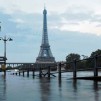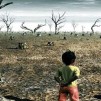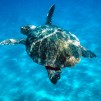In 2011 the Commission complained that Greece had not complied with its obligation to protect the Caretta caretta turtle in the Bay of Kyparissia. Since it was not satisfied by Greece’s response, the Commission decided to bring an action against Greece before the Court of Justice for failure to fulfil obligations. This is not the first time that the Commission has brought such an action in connection with the protection of Caretta Caretta.
In today’s judgment, the Court largely upholds the Commission’s action and finds that Greece has failed to fulfil its obligation to protect the Caretta Caretta turtle in the Bay of Kyparissia. In particular, the Court considers that certain infrastructure (for example, building projects and residential construction) and its subsequent use are liable to have a significant effect on the habitats in the Kyparissia area.
Similarly, the construction and use of such infrastructure, particularly because of the noise, light and human presence entailed, are likely –– as are ‘wild’ camping and the operation of bars –– to significantly disturb the Caretta Caretta sea turtle during breeding. In addition, unregulated car parking and the asphalting of certain tracks cause damage to the turtles’ dune habitats, exacerbating noise and light and disturbing them during egg-laying. In addition, the Court finds that light from restaurants, hotels and shops located around the Kyparissia area also disturbs the turtles.
About the turtle Caretta Caretta
The turtle Caretta Caretta (also known as the loggerhead turtle) is a sea turtle which, on average, is 90 cm long and weighs 135 kg and which is found, amongst other places, in the Mediterranean Sea. A particular feature of this turtle is that it only lays eggs every 2 to 3 years, during the period from May to August.
The turtle leaves the sea at night and moves towards the driest area of the beach where it digs a hole of between 40 and 60 centimetres in which it lays an average of 120 eggs. Two months later the eggs hatch and the young turtles then emerge from the sand and head towards the sea. They are vulnerable and a large number of them die.













Leave a Reply